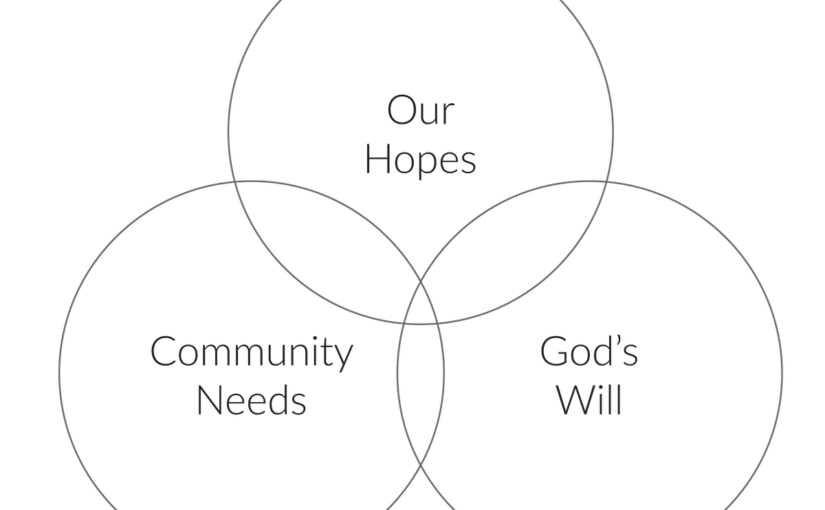As I was going to Home Depot this morning I was thinking about vision and mission statements for congregation in light of the question “Who owns the church?” Without going into the details of my thought process I ended up thinking about the stakeholders in a congregation and how we can use stakeholder model to enhance conversations about vision and mission. A possible conversation starter would be to use a venn diagram and go through different areas without any biases.
- Our Hopes ∩ God’s Will ⊄ Community Needs
- Our Hopes ∩ Community Needs ⊄ God’s Will
- God’s Will ∩ Community Needs ⊄ Our Hopes
- Our Hopes ⊄ God’s Will ⊄ Community Needs
- God’s Will ⊄ Community Needs ⊄ Our Hopes
- Community Needs ⊄ Our Hopes ⊄ God’s Will
- Community Needs ∩ Our Hopes ∩ God’s Will
We could follow up with questions about any of these areas, and perhaps wondered aloud if there is a place on the venn diagram that can be described as a sweet spot which we should try to expand and stay in, and leave all other stakeholder goals behind.
I think this could be a fun exercise, if we remember there are no right answers. If we start out by looking at each category separately. Starting with Our Hopes, moving next to Community Needs, and finally asking what God’s will is for the church. Starting with questions about God, might pollute the rest of the categories.
Add on: This is a simplified model, and what is missing is f.x. Pastor’s Ambition and the fact that the congregational leadership might not have a unified hope.

